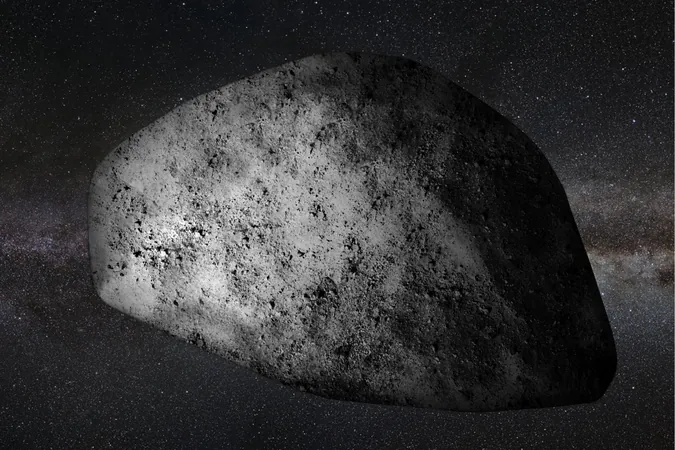
Asteroid Apophis: A Looming Tremor and Transformation Ahead of 2029 Earth Flyby!
2024-11-04
Author: Ming
Introduction
In a groundbreaking study, astronomers are predicting that Apophis, a near-Earth asteroid, will undergo significant geological changes during its much-anticipated flyby of Earth on April 13, 2029. The asteroid, measuring an impressive 1,100 feet (335 meters) in diameter, will pass within a mere 24,000 miles (38,625 kilometers) of our planet—ten times closer than the Moon! This incredible proximity raises questions about the potential effects of Earth's gravitational force on Apophis's structure and surface.
Predicted Geological Changes
The research team, whose findings will soon be published in The Planetary Science Journal and currently available on the preprint server arXiv, believes that the gravitational pull from Earth could instigate seismic events, akin to quakes, and cause landslides on the asteroid. "The 2029 encounter will induce short-term tidally-driven discrete seismic events leading to high-frequency surface accelerations," the researchers noted, suggesting that these effects might even be detectable by modern seismometers.
Observing Apophis's Alterations
As Apophis approaches, scientists are keenly observing its shifting spin state, which could lead to longer-lasting alterations on the asteroid's surface. Such mechanisms may refresh Apophis in ways previously unseen, potentially offering insights into the geological history of other asteroids as well.
Implications of Studying Apophis
But the implications of studying an asteroid like Apophis extend far beyond mere curiosity. The interiors of these space rocks hold vital information about the solar system’s history and even the origins of life. Organic molecules housed within asteroids could provide clues regarding the building blocks of life, while the composition of the asteroid itself can reveal how it formed through cosmic interactions. These records may illuminate why certain asteroids, such as the mysterious interstellar object ‘Oumuamua,’ exhibit odd acceleration patterns.
Safety and Collision Risks
Despite its daunting size, Apophis poses no threat to Earth during this approach. Scientists maintain that it would take an improbable series of events for the asteroid's trajectory to change enough to threaten our planet. In fact, studies from NASA suggest that the likelihood of a collision is virtually non-existent for at least the next century.
Historical Impact Context
Asteroids around Apophis’s size impact Earth approximately once every 80,000 years, and such events can inflict extensive damage locally, with the potential to disrupt Earth's climate. For context, consider the Chelyabinsk meteor that exploded over Russia in 2013—although it was significantly smaller at 66 feet (20 meters) in diameter, its force was equivalent to 500 kilotons of TNT, demonstrating the hazardous potential of these celestial bodies.
Exploration Opportunities
Interestingly, Apophis is stirring up excitement not just for its scientific implications but also for potential exploration missions. Earlier this year, companies like Blue Origin have proposed ideas for making the most of its close encounter. Currently, NASA’s OSIRIS-APEX mission is already en route to the asteroid, aiming to gather critical data on how Apophis will react during its close flyby.
Conclusion
So mark your calendars for April 13, 2029—a Friday that promises not just an astronomical event, but also a chance to gain unprecedented insight into the dynamic behaviors of asteroids like Apophis. As scientists continue to unravel the mysteries of these celestial bodies, the upcoming encounter may redefine our understanding of life’s origins and the evolutionary history of our solar system. Don’t miss this cosmic spectacle!





 Brasil (PT)
Brasil (PT)
 Canada (EN)
Canada (EN)
 Chile (ES)
Chile (ES)
 España (ES)
España (ES)
 France (FR)
France (FR)
 Hong Kong (EN)
Hong Kong (EN)
 Italia (IT)
Italia (IT)
 日本 (JA)
日本 (JA)
 Magyarország (HU)
Magyarország (HU)
 Norge (NO)
Norge (NO)
 Polska (PL)
Polska (PL)
 Schweiz (DE)
Schweiz (DE)
 Singapore (EN)
Singapore (EN)
 Sverige (SV)
Sverige (SV)
 Suomi (FI)
Suomi (FI)
 Türkiye (TR)
Türkiye (TR)